

Breast Cancer: Surgery
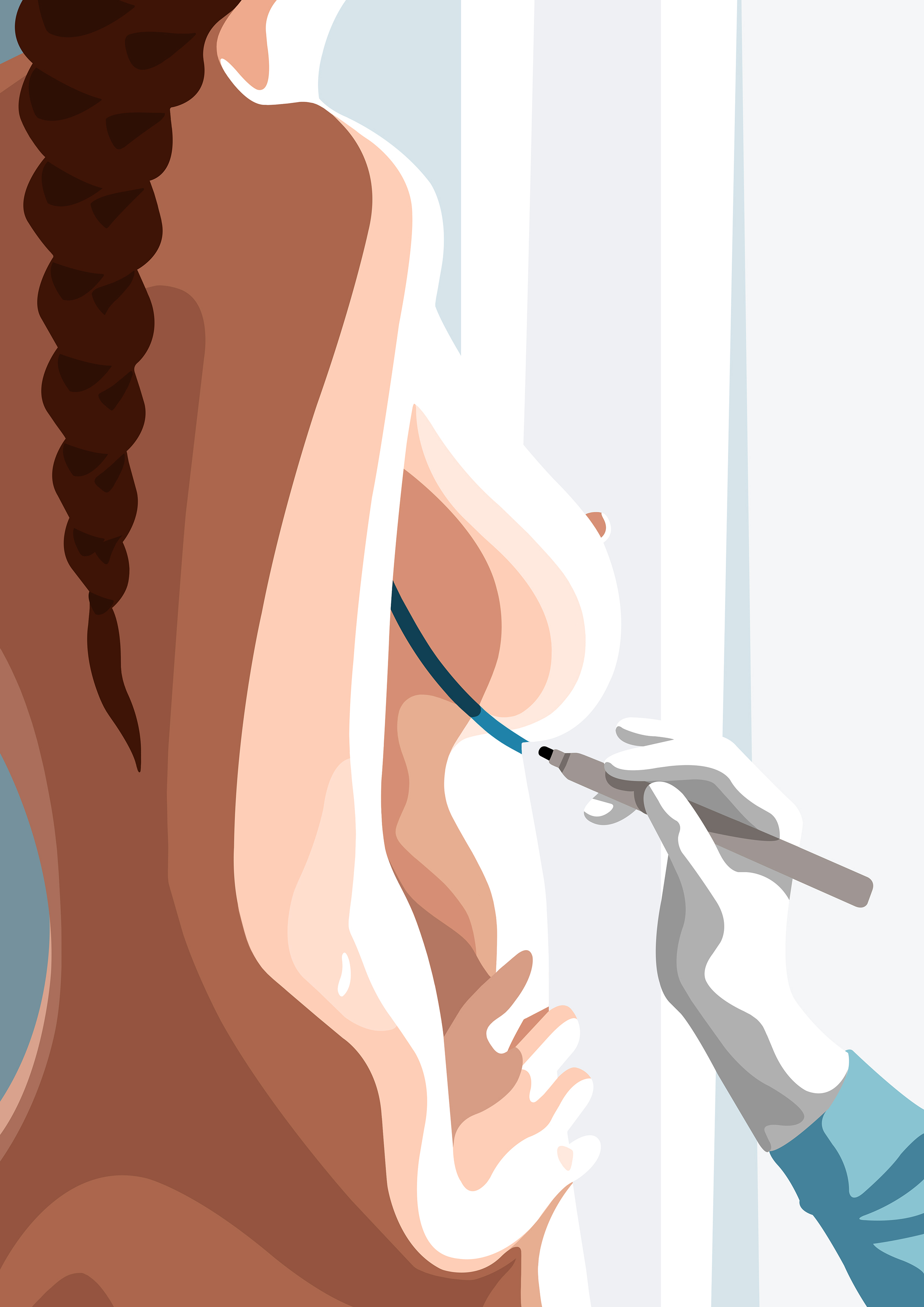
“At 2 p.m., I go back to the clinic. They prepare me for the operation that is to take place the next morning … I panic, I’m not ready, I don’t want to go to the O.R.”. (excerpt from Fighting Lady )
Surgery is one of the cornerstones of breast cancer treatment, but just the mention of the word quickly overwhelms us with feelings of anxiety and apprehension.
The breast is a symbol of femininity, seduction, pleasure, maternity …
Will this surgery affect my femininity? Will I still be desirable to my loved one? What will be the repercussions in my daily life, temporary or forever? Will the surgeon succeed in removing the tumor?
In this article, I am going to provide you with some information that I hope will help you better understand the stages of surgery.
Curative Breast Cancer Surgeries
In France, the care protocol is defined at a Multidisciplinary Team Meeting (MDTM). Several surgeons, radiologists, oncologists, radiotherapists participate. This is a real evolution that ensures you have the treatment best suited to your case. Described in article D. 6124-131 of the Public Health Code, MDTMs are mandatory for all oncology patients, as recommended in the 2003 Cancer Plan.
The goal of the surgery is to remove the tissue affected by the cancer cells. While it is often the first step in treatment, it is now sometimes performed after a treatment that will reduce the tumor and make surgery easier. The treatment will then be called neo-adjuvant.
The type of surgery will depend on the size and location of your tumor, the size of your breast, whether or not the cancer has spread to the lymph nodes, and any other treatment you have already received.
Depending on your health care center and your personal choice, surgery can be performed in a conventional inpatient or outpatient setting. Outpatient surgery is a method of care that allows you to shorten your hospitalization to one day, so you go to the hospital in the morning for surgery on that day and you are discharged in the evening.
The lumpectomy or partial mastectomy
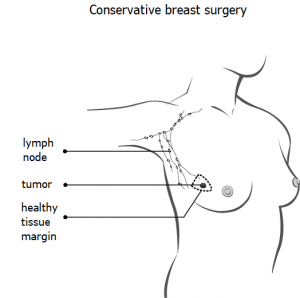 A lumpectomy, also known as breast conserving surgery, allows you to keep or preserve as much of your breast as possible.
A lumpectomy, also known as breast conserving surgery, allows you to keep or preserve as much of your breast as possible.
This type of surgery is possible if the surgeon is able to remove the tumor and a healthy margin of tissue safely while preserving enough tissue to keep the breast natural.
The specialized breast surgeon has different operating techniques at his disposal, choosing incisions according to the location of the tumor and the size of the breast to try to preserve the shape and the aesthetic result of the operated breast as much as possible.
Following the operation, the care team sends the breast tissue to the laboratory for examination. If there are no cancer cells in the edges of the removed tissue, the margins are said to be healthy, or negative.
If there are cancer cells in the edges of the removed tissue, the margins are said to be positive. The surgeon will then propose a new surgical procedure to remove more tissue and avoid the formation of a new tumour.
Total mastectomy
Mastectomy, or non-conservative surgery, involves removing the entire breast, usually including the areola and nipple.
In this case, different breast reconstruction techniques may be offered (immediate or secondary), I will tell you about them in a future article.
Exploration of axillary lymph nodes: Sentinel lymph node and/or axillary clearing
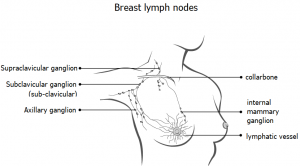 As part of the breast cancer staging process, the surgeon removes the lymph nodes that drain the tumor and will be analyzed to determine whether or not they have cancer.
As part of the breast cancer staging process, the surgeon removes the lymph nodes that drain the tumor and will be analyzed to determine whether or not they have cancer.
Depending on the situation, two techniques may be used:
-The sentinel node technique is performed during the breast operation.
The sentinel node is the first lymph node in a chain or group of lymph nodes that receives lymph from the area around the tumor.
The surgeon removes this lymph node as a “filter” to find out if it has cancer. If cancer cells are found, in some cases, a new surgery may be necessary: axillary removal.
Several techniques are possible with preoperative injection of either an isotope (injected in nuclear medicine), or a blue dye, or both (combined method) or more recently an Indocyanine green dye for an immunofluorescence technique.
The sentinel node technique has become the reference for avoiding axillary clearing in more than 80% of cases.
–”Axillary clearing” consists of removing all the lymph nodes in the armpit in order to eliminate any possibility of spreading cancer cells and reduce the risk of recurrence.
It is still necessary for certain advanced tumours or when the lymph nodes are invaded.
Depending on your situation, axillary clearing can also be performed as a first-line treatment (without going through the sentinel node stage).
Breast cancer surgery, what next?
The postoperative after-effects
-During your surgery, a drain (a small, very thin plastic or rubber tube) may sometimes be put in place. It will allow the evacuation of liquids (blood, lymph) that may accumulate during the healing process.
This drain is not painful, but it may need to be kept in place for a few days. It is common to take it home with you, and the independent nurses will then take over to monitor and remove it.
-As after any surgery, pain is frequent in the operated area, it will be treated by the nursing team who will propose an adapted treatment. In order to limit these pains, the trained teams usually propose a supplement of local anesthesia by preoperative guided echo infiltration (block).
–A local hematoma may also form, but it often resolves on its own within a few days. Otherwise, if the hematoma is large or if a lymph collection exists, a (painless) puncture can be performed.
– Finally, to avoid phlebitis (presence of a blood clot forming in a vein), the wearing of support stockings is recommended for several days after surgery. It is also advisable to get up and move around fairly soon after the surgery.
The post-operative consequences of the surgery are different from one person to another.
Physical impacts
-Following your surgery, fatigue is normal. It is due to general anesthesia, blood loss or anxiety generated by the operation. It may last a few days, but if it persists, it should not be trivialized, I invite you to report it to your health care team,
– After breast surgery, pain, stiffness in the shoulder or arm, and decreased muscle strength are common. You may experience difficulty moving your arm or shoulder, sensitivity problems, burning or tingling. In most cases, the limitation of movement is temporary.
The day after your surgery, a physiotherapist will be able to monitor the post-operative period and suggest simple exercises for arm movement, which you can then practice alone, gradually and daily.
In the case of axillary clearing, the most well-known side effect is lymphedema of the upper limb, a swelling caused by the slowing down or blocking of lymph circulation. The lymph no longer circulates properly and sometimes accumulates in the skin of the arm on the side of the operated breast and can lead to an increase in its volume, hence the name “big arm”.
Lymphedema may occur a few weeks after axillary removal, months or even years later, or never. That’s why you need to stay alert and “listen” to your arm.
-After breast surgery, especially during axillary removal, you may feel like a thin rope under your skin. This is an axillary rope (or bridle). Unlike lymphedema, it feels more like strong tension.
It’s your lymphatic system that gets stimulated and hardens, making the lymph vessel palpable or visible, taut like a guitar string. These strings are usually located at the root of the arm, in the armpit, and can extend to the elbow and forearm. Specific movements and re-education will allow a complete recovery.
-Other physical consequences of the surgery can be inconvenient: mastectomy can lead to weight imbalance that impacts the muscles in the neck or back.
Aesthetic and psychological consequences
Having cancer and receiving treatment is not only a challenge for the body, it is also a psychological and emotional ordeal.
Re-learning one’s body image after breast surgery is difficult, we can sometimes feel a sense of disgust at a new appearance, a loss of self-esteem.
For those who have had conservative surgery, the breast is slightly different, perhaps smaller, firmer. The scar or shape of the breast may seem unsightly, but eventually the scars fade.
For those who have had a mastectomy, accepting their self-image is even more difficult and questions their femininity, their intimate life…
The importance of taking care of yourself after surgery
A follow-up in specialized physiotherapy
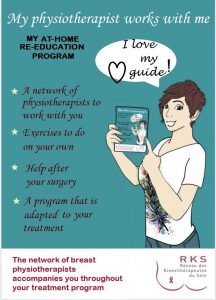 After your surgery, your body will gradually regain its mobility and flexibility to perform everyday tasks. You will also be able to resume sports activities. This is only a matter of time.
After your surgery, your body will gradually regain its mobility and flexibility to perform everyday tasks. You will also be able to resume sports activities. This is only a matter of time.
In order to recover more easily and avoid the risks of a decrease in the amplitude of movement, physiotherapy is particularly indicated, especially when an axillary cleaning has been performed.
To find a physiotherapist specialized specifically in senology, I invite you to visit the Réseau des Kinés du Sein website .
Dorothée Delecour, president of the Rks: “Breast cancer management is complex, both psychologically and technically. It requires knowledge of the various curative and restorative surgery techniques, as well as the side effects of treatments, chemotherapy, radiotherapy and hormone therapy. It is a real support process, tissue work and global rehabilitation, including the cervical spine, the shoulder complex, the diaphragm, the thorax as a whole as well as the spine and posture as a whole. We take care of: Scars, pain, edema, lymphoceles, shoulder stiffness, axillary cords, fibrosis, postures, pre- and post-operative reconstruction surgery, body proprioception”.
Pamper your arm
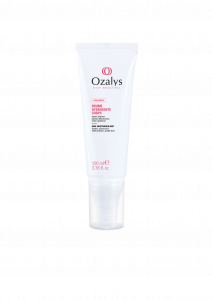 It’s important to monitor your arm, you are the first to be able to assess and feel even small changes. My arm, the one that was close to the operated breast, was causing me excruciating pain. I couldn’t move, put on a coat, hold a knife, or drive.
It’s important to monitor your arm, you are the first to be able to assess and feel even small changes. My arm, the one that was close to the operated breast, was causing me excruciating pain. I couldn’t move, put on a coat, hold a knife, or drive.
It is from my experience of the disease that the Ozalys range of care was born . Thus, our moisturizing mist is adapted to facilitate its daily use. Its non-sticky and non-greasy texture facilitates penetration without massaging, its easy-to-use tube works through 360 degrees to compensate for the simple gesture of raising your arm which, I know all too well, can become an everyday challenge.
By practicing a certain number of precautions and healthy lifestyle rules, it is possible to take care of your arm and prevent the risk of lymphedema (especially after a complete clearing):
-Protect your arm and hand from injuries (cuts, scratches, bruises, burns) by wearing rubber gloves for cooking, gardening, housework.
-Wash and disinfect even minor injuries to the limb (shoulder, armpit, arm).
-Avoid taking blood pressure or blood samples on the operated side.
-Avoid carrying heavy loads with the affected arm, and use the other arm instead.
Move your arm as recommended by the physiotherapist to stimulate lymph drainage.
-Return to sport gradually
-Do not wear clothing or accessories too tightly to avoid a tourniquet effect.
– When flying long distances, it is sometimes preferable to wear a restraint sleeve. Sleeves are compression garments prescribed after axillary cleaning to limit the progression or risk of lymphedema. Their purchase must be aided by sound advice, in a specialized pharmacy, with measurements taken to ensure that the product is perfectly suited to your arm and your situation.
Regain self-esteem
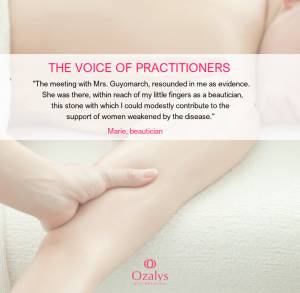 Faced with all the physical changes that are linked to surgery (and treatments), it is difficult to accept and embrace our abused/mutilated body, it is not easy to ” reconnect ” with such a different body. It is not uncommon not to be able to bear being touched, or even just looked at.
Faced with all the physical changes that are linked to surgery (and treatments), it is difficult to accept and embrace our abused/mutilated body, it is not easy to ” reconnect ” with such a different body. It is not uncommon not to be able to bear being touched, or even just looked at.
Life as a couple, self-esteem, body image, confidence, many changes and questions accompany life after breast surgery.
Supportive care, especially aesthetic care, can be a way to reconnect with oneself, to relearn how to take care of oneself. Since the creation of the Ozalys range of professional care , I have had the pleasure of meeting many practitioners (estheticians and socio-aestheticians) involved with women affected by cancer.
Their treatments are precious moments of relaxation, which will bring you softness, comfort, and allow you to relearn how to be touched, to reconnect with your body and to reinvest your fragile femininity.
TO CONCLUDE
Surgery is a delicate step in the care process, which directly affects our femininity and impacts our body image and self-esteem.
To support you on this path of reconciliation with yourself, I am happy to bring you, at my level, the possibility to take care of yourself and find your way back to your bathroom in complete serenity.

